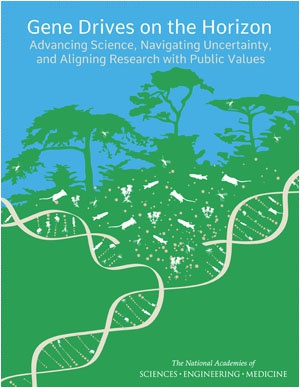http://ejfood.blogspot.com/2016/07/gmwoes-ghostbusters-gmos-and-feigned_2.html
Last week a controversy erupted just as the Roberts-Stabinow Digital Divide GMO labeling law was being discussed in the Senate. It involves a letter signed by 100+ Nobel laureates attacking Greenpeace for being “anti-scientific” in its stance against the proliferation and continued use of genetically engineered organisms.
The letter is a defense of “Golden Rice”, a GMO said to address vitamin deficiencies associated with blindness in the Global South and perhaps one of the worst of the frequent scientific frauds perpetrated by biotechnology interests. The Nobel Prize recipients fell for a zombie rice story that refuses to die and persists as a central legitimizing narrative in the pseudo-humanitarian rhetoric that regularly spews from the pro-GMO propaganda machine. I have written about this in the past to show how Monsanto and the other Gene Giants are spending hundreds of millions on a deceptive campaign to misinform the public about the fake scientific consensus they spin based on inadequately designed industry-led studies of risk, toxicology, and food safety (see the post of May 2, 2014).
It should be further noted that scientists and activists in the food and seed sovereignty movements, including Vandana Shiva, have shown two things about this so-called miracle rice crop: (1) Advances in eliminating blindness among children in the Global South, where they have been possible, worked by addressing access to healthy and culturally appropriate foods and diets; getting rid of hunger and poverty greatly reduces the prevalence of nutritionally triggered blindness, and many other maladies for that matter. (2) The scientific claims about Golden Rice are fabricated exaggerations. Researchers with Vandana Shiva’s Seed Freedom project explain the gist of the problem:
Since the daily average requirement of vitamin A is 750 micrograms of vitamin A and 1 serving contains 30g of rice according to dry weight basis, ‘Vitamin A rice’ would only provide 9.9 micrograms which is 1.32% of the required allowance. Even taking the 100g figure of daily consumption of rice used in the technology transfer paper would only provide 4.4% of the RDA. In order to meet the full needs of 750 micrograms of vitamin A from rice, an adult would have to consume 2 kg (272g) of rice per day. This implies that one family member would consume the entire family ration of 10kg. (See the research on this question at Seed Freedom, here).
Moreover, it has been noted by numerous scientific experts and other observers that none of the signers of the letter have any substantive research experience in the fields of environmental risk science, toxicology, or food safety. The group of Nobel Laureates includes: 1 peace prize, 8 economists, 24 physicists, 33 chemists, 41 doctors. One critic of the letter, Claire Robinson of GM Watch, adds the observation, quoting Phillip Stark, Associate Dean, Division of Mathematical snd Physical Sciences and Professor of Statistics at University of California-Berkeley, that science is “about evidence not authority. What do they know of agriculture? Have they done relevant research? Science is supposed to be ‘show me’ not ‘trust me’…Nobel Prize or not.”
This leads me to make another observation about the unethical nature of this letter which is an example of the deception of scientific authority masquerading as expertise. The only expert in agriculture on the list of signers is the ghostly Norman Borlaug, who is of course the “Father of the Green Revolution”. And herein lies the basic problem: Borlaug was no friend of Indigenous farmers, seed savers, and plant breeders. He was guilty of imposing high-input hybrid seeds developed by technicians in lab-white who never consulted or developed relations of solidarity with farmers. This was arrogant top-down agricultural managerialism and did a lot to damage the prospects for food sovereignty. As one recent study of the failure of Golden Rice notes:
The Green Revolution spread generic, disembedded high-input seeds to replace locally adapted landraces as well as peasant attitudes and practices associated with them. The disembeddedness of Golden Rice that boosts its value as a public relations vehicle has also been the main impediment in it reaching farmers’ fields, as it has proved difficult to breed into varieties that grow well specifically in the Philippines.[1]
The disembeddedness of GMO crops is the heart of this problem and the Nobel laureates have failed to understand how culture intersects with agriculture in ways most physicists and neoliberal economists cannot fully comprehend unless they open their minds to other ways of knowing and being in the world. Anyone with the intelligence to become a Nobel laureate surely has a moral obligation to understand this cultural context before participating in an act of epistemic violence designed to justify continued corporate domination of our food systems and dismiss our scientific counter-claims and evidence as ideological puffery.
We may also need to recruit the Ghostbusters since at least two of the signers are dead. Alfred G Gilman died on Dec 23 2015 and Norman Borlaug died on Sept 12, 2009.
I am reposting the insightful critique of the letter prepared by Claire Robinson of GM Watch. The original post can be found here at: GM Watch.
- Devon Peña
Source note:
[1] Glenn Davis Stone and Dominic Glover 2016. Disembedding grain: Golden Rice, the Green Revolution, and heirloom seeds in the Philippines. Agriculture and Human Values. April 16, 2016. http://link.springer.com/article/10.1007/s10460-016-9696-1. doi:10.1007/s10460-016-9696-1.
Etiquetas: Devon Peña, en, Premio Nobel









